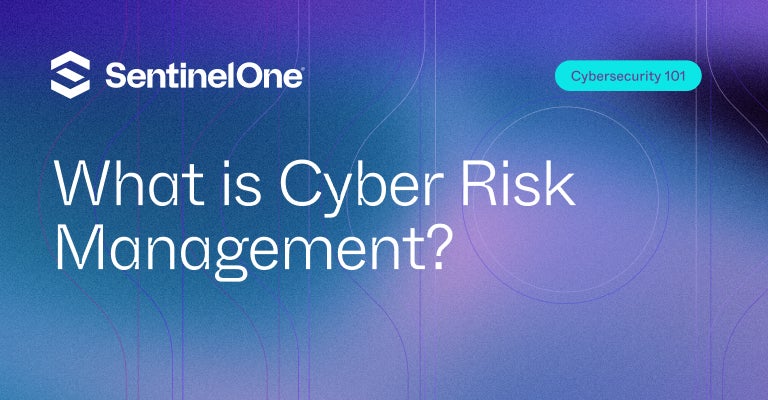Cyber risk management involves identifying, assessing, and mitigating risks associated with cyber threats. This guide explores the key components of effective cyber risk management strategies, including risk assessment frameworks and incident response planning.
Learn about the importance of continuous monitoring and adapting to the evolving threat landscape. Understanding cyber risk management is crucial for protecting organizational assets and ensuring resilience.

What is Cyber Risk Management?
Cyber risk management is a process that involves identifying, assessing, and mitigating potential risks to an organization’s digital assets. It is an ongoing process that involves analyzing potential threats, vulnerabilities, and impacts on an organization’s information technology infrastructure, networks, and data. Cyber risk management is crucial for organizations because cyber threats are becoming more sophisticated and frequent, making preventing and mitigating attacks more challenging.
How Does Cyber Risk Management Work?
Cyber risk management works by identifying potential risks to an organization’s digital assets, assessing their likelihood and impact, and implementing measures to mitigate those risks. The process typically involves the following steps:
- Identification – In this stage, the organization identifies the assets that need protection and the potential risks they may face. This includes assessing the organization’s systems, networks, applications, data, and employees. The identification stage is crucial because it helps organizations to understand their potential risks and prioritize their cybersecurity investments.
- Assessment – Once the potential risks have been identified, the organization assesses their likelihood and potential impact. This involves analyzing the vulnerabilities and threats that may exploit those vulnerabilities. The assessment stage helps organizations understand a cybersecurity incident’s potential impact and prioritize mitigation efforts accordingly.
- Mitigation – The organization implements measures to mitigate the identified risks based on the assessment. This may include implementing security controls, updating software and hardware, providing employee training, and developing incident response plans. The mitigation stage is critical because it helps organizations to reduce their potential risks and prevent cybersecurity incidents.
- Monitoring – After implementing the mitigation measures, the organization continues monitoring the systems and networks for potential risks. This helps to ensure that the mitigation measures are effective and that new risks are identified and addressed promptly. The monitoring stage is essential because it helps organizations to maintain their cybersecurity posture and respond to new threats quickly.
Benefits of Cyber Risk Management
Cyber risk management offers several benefits to organizations, including:
- Improved Security – Cyber risk management helps organizations improve their security posture by identifying potential risks and implementing measures to mitigate those risks. Organizations can prevent cyber incidents and protect their digital assets by implementing cybersecurity controls.
- Cost-Effective – Cyber risk management is a cost-effective way of managing cybersecurity risks. It helps organizations to prioritize their security investments and allocate resources effectively. By prioritizing their cybersecurity investments, organizations can achieve the most significant security gains with the least resources.
- Regulatory Compliance – Cyber risk management helps organizations to comply with regulatory requirements, such as GDPR and CCPA, which require organizations to protect their customers’ data and privacy. Organizations can avoid costly fines and reputational damage by complying with these regulations.
- Business Continuity – Cyber risk management helps organizations to ensure business continuity by identifying potential risks and developing contingency plans to address them. By developing contingency plans, organizations can respond quickly to cyber incidents and minimize the impact on their operations.
Actionable Data for Cyber Risk Management
To improve their cybersecurity posture, organizations can use the following actionable data for cyber risk management:
- Conduct regular vulnerability scans and penetration testing – Organizations should conduct regular and penetration tests to identify potential vulnerabilities in their systems and networks.
- Implement security controls – Organizations should implement security controls such as firewalls, antivirus software, and intrusion detection and prevention systems to prevent cyber attacks.
- Develop an incident response plan – Organizations should develop an incident response plan that outlines the steps to be taken in the event of a cybersecurity incident. This plan should include procedures for notifying relevant stakeholders, isolating affected systems, and restoring operations.
- Provide employee training – Employees are often the weakest link in an organization’s cybersecurity posture. Therefore, organizations should provide regular cybersecurity training to their employees to help them identify potential threats and prevent cyber incidents.
- Implement a security information and event management (XDR) system – XDR systems can help organizations to identify potential threats and respond to them quickly. These systems collect and analyze security-related data from multiple sources to identify potential threats.
- Regularly backup data – Organizations should regularly back up their data to ensure that they can recover from a cyber incident quickly. This includes backing up critical data and testing the backup systems to ensure they work effectively.
Conclusion
Cyber risk management is essential for any organization that wants to protect its digital assets from potential risks. Organizations can improve their cybersecurity posture, comply with regulatory requirements, ensure business continuity, and allocate resources effectively by identifying, assessing, and mitigating potential risks. Organizations should use actionable data to improve their cybersecurity posture, such as conducting regular vulnerability scans, implementing security controls, developing an incident response plan, providing employee training, implementing a SIEM system, and regularly backing up data. By adopting cyber risk management strategies and leveraging actionable data, organizations can protect themselves from ever-increasing cybersecurity threats and ensure the safety of their systems and data.